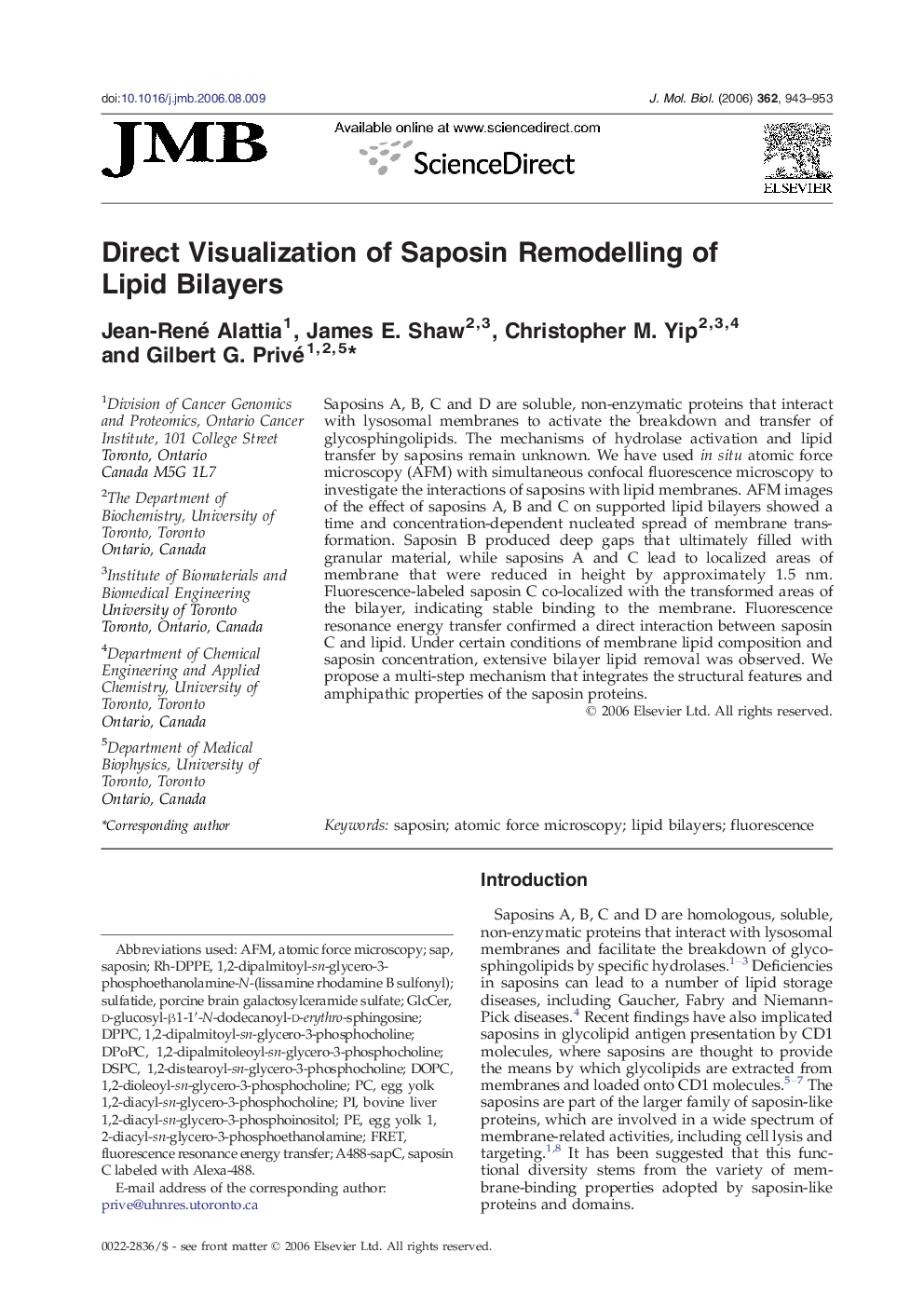| Article ID | Journal | Published Year | Pages | File Type |
|---|---|---|---|---|
| 2188857 | Journal of Molecular Biology | 2006 | 11 Pages |
Saposins A, B, C and D are soluble, non-enzymatic proteins that interact with lysosomal membranes to activate the breakdown and transfer of glycosphingolipids. The mechanisms of hydrolase activation and lipid transfer by saposins remain unknown. We have used in situ atomic force microscopy (AFM) with simultaneous confocal fluorescence microscopy to investigate the interactions of saposins with lipid membranes. AFM images of the effect of saposins A, B and C on supported lipid bilayers showed a time and concentration-dependent nucleated spread of membrane transformation. Saposin B produced deep gaps that ultimately filled with granular material, while saposins A and C lead to localized areas of membrane that were reduced in height by approximately 1.5 nm. Fluorescence-labeled saposin C co-localized with the transformed areas of the bilayer, indicating stable binding to the membrane. Fluorescence resonance energy transfer confirmed a direct interaction between saposin C and lipid. Under certain conditions of membrane lipid composition and saposin concentration, extensive bilayer lipid removal was observed. We propose a multi-step mechanism that integrates the structural features and amphipathic properties of the saposin proteins.
